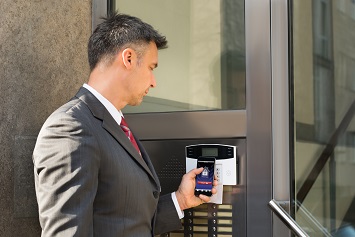More than one in ten of the UK’s lockdown businesses are in the trade industry Over 20,000 new businesses focus on the ‘development of building products’ – a fifth of all lockdown trade companies Per capita, Aberdeen has seen the greatest number of trade start-ups since March 2020 Since the first Coronavirus lockdown was announced on 23rd March 2020, over 112,000 trade businesses have been set up in the UK, new research has revealed. The study, conducted by IronmongeryDirect, the UK’s largest supplier of specialist ironmongery, analysed over one million rows of Companies House data1 and found that more than one in ten (11%) of all businesses set up during the pandemic (1,019,970) are in the trade industry. Of the 112,047 new companies in the sector, almost a fifth (19%) focus on the ‘development of building products’, with 20,753 start-ups – more than any other trade category. Similar projects also take up the next three spots, with ‘construction of domestic buildings’ and ‘commercial buildings’ both making the top five. Companies specialising in ‘electrical installation’ are not far behind, with 8,194 new businesses, while ‘plumbing, heat and air-conditioning installation’ firms also feature highly. The ten most common categories for trade businesses established since the first lockdown are: 1) Development of building projects – 20,753 2) Construction of domestic buildings – 16,278 3) Other specialised construction activities – 9,395 4) Construction of commercial buildings – 8,763 5) Electrical installation – 8,194 6) Other building completion and finishing – 8,151 7) Plumbing, hear and air-conditioning installation – 7,299 8) Other construction installation – 6,146 9) Landscape service activities – 3,685 10) Painting – 3,090 Other popular trades, such as roofing (2,612), joinery (2,226) and plastering (1,589) have also seen many new enterprises. These lockdown companies are spread out across the UK, but, while London inevitably has the most new trade businesses (24,977) due to its size – almost eight times as many as the next city, Birmingham (3,175) – Aberdeen has the most per capita. With 163 new companies and a population of just under 230,0002, there is one lockdown trade start-up per 1,403 people in the Scottish port city. On this metric3, Southend-on-Sea takes second place and top spot for England, followed by Bath. The top five UK hotspots for lockdown trade businesses are: 1) Aberdeen – 163 (one per 1,403 people) 2) Southend-on-Sea – 132 (one per 1,402) 3) Bath – 94 (one per 1,102) 4) Edinburgh – 488 (one per 1,076) 5) Belfast – 273 (one per 1,056) Dominick Sandford, Director and Head of Merchandising & Marketing at IronmongeryDirect, said: “The pandemic has brought many challenges to businesses, but it’s great to see that it has also created some opportunities, with lots of tradespeople starting new companies. “Setting up a business can be tricky at the best of times, so these individuals deserve tremendous credit for making it work during lockdown. “If you’re thinking of following their lead and starting your own trade company, we’ve partnered with Rick Smith, Managing Director at an insolvency and business rescue specialist, to provide expert advice on how to do so.” For expert tips on how to set up a trade business, visit: https://www.ironmongerydirect.co.uk/blog/expert-tips-for-setting-up-a-new-business














